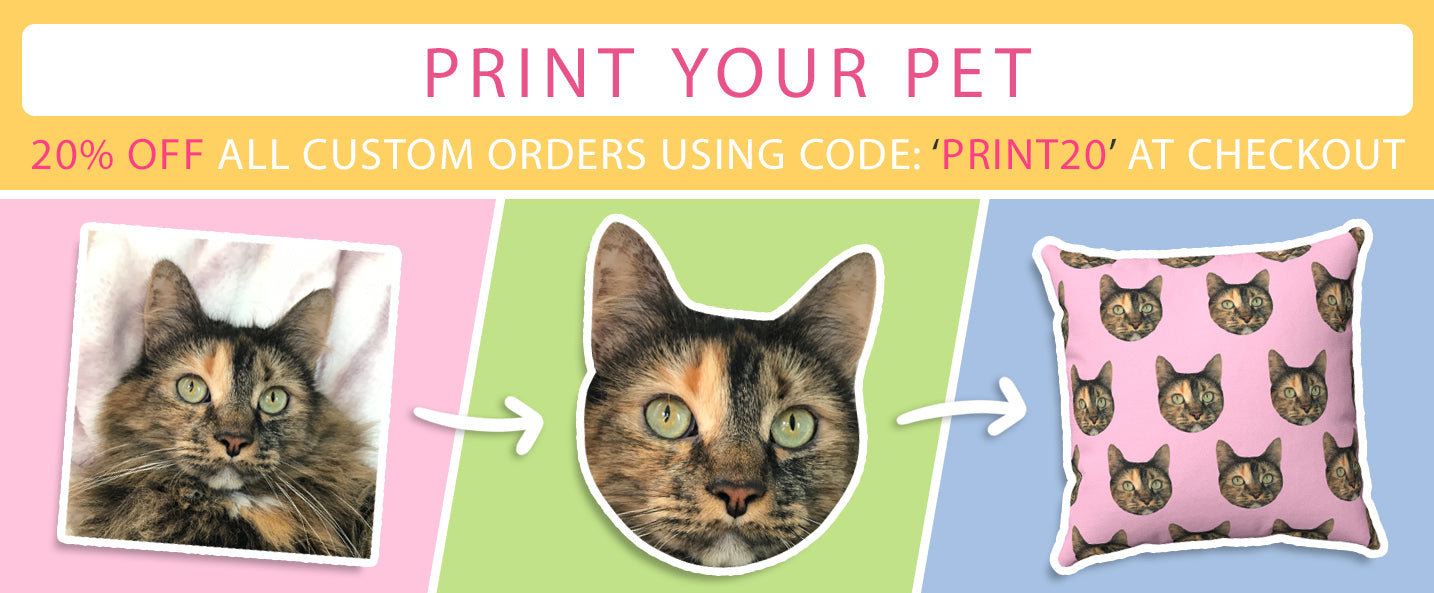"Tortitude" Is Real, And Other Fun Facts About Tortoiseshell Cats

Ready for some fast feline facts about Tortoiseshell Cats? These notoriously feisty felines are surrounded by some pretty cool facts - and fiction - from rare genetics to a pretty metal story involving the blood of a mythical goddess. Man, Torties are great.
Tortoiseshell Cats Are Not Actually a Breed of Cat
Tortoiseshell actually refers to the cat’s coat color and fur pattern. Affectionately shortened to “Torties,” Tortoiseshell cats are named for their distinctive multicolored coats featuring a constellation of black, brown, amber, red, cinnamon and chocolate – and very little or no white markings.
Often confused with calico cats, who are predominately white, orange and black, the Tortoiseshell pattern can be seen in Persians, Cornish Rex, and the Japanese Bobtail - just a few of the many breeds that can produce a tortoiseshell coat, both long and short-haired.
Some variations of the tortoiseshell include "dilution," which results in softer, muted greys and creams instead of red and black. There is also the "Torbie" pattern, which is a tortoiseshell cat with tabby stripes.
Torties are Full of “Tortitude."

If you are the servant – er, owner – of a multicolored kitty like a calico or tortoiseshell, you might already know what “tortitude” is. But for those who aren’t aware, there is a bit of a myth surrounding our multicolored feline friends. “Tortitude” is often affectionately applied to a cat with a tortoiseshell or calico coat that also happens to have a bit more, well, cattitude.
Torties are known for being a bit more challenging, strong-willed, and can be possessive of their human. Other words used to describe torties are “fiercely independent, feisty and unpredictable,” according to Ingrid King, author of the Conscious Cat.
If your tortie has a bit of ‘tude, don’t worry – you’re not crazy for thinking it! According to a study from veterinarians at the University of California, cats with calico and tortoiseshell coats tend to challenge their humans more often than other less flashy felines.
Looking for a way to tame your cat's tortitude? Be sure to provide your kitty with plenty of indoor enrichment, like food puzzles or catnip kicker toys as an outlet for all that pent up 'tude!
Torties are almost always female.

The color of a cat’s fur is inherited from its parents, much like our human hair color. Because the genes responsible for orange and black fur color in cats are carried on the X chromosome, torties (and other multicolored kitties) are typically born female. This fun feline genetic detail also applies to calico cats!
About 1 in 3,000 Torties are male

Because each color is carried on a different X chromosome, a cat needs two X chromosomes to be born with a calico or tortoiseshell pattern, which means they will almost always be born female. However, due to a rare genetic mutation that results in an XXY genotype, a male tortie may be born. But that’s a 1 in 3,000 occurrence – a 0.3% chance!
Torties Are Mythical

Torties - and calicos, too - are often the focus of folklore and legend. In the United States, they’re referred to as “money cats," being that male torties and calicos are so rare. In Scotland and Ireland, it’s seen as good luck when a male tortoiseshell comes into your home.
Japanese fisherman believed that bringing a tortie onto their boat would protect them from storms and ghosts.
Even the Khmers of Southeast Asia even developed an explanation as to the origins of a tortie: they came from “the blood of a young goddess born of a lotus flower during a magical ritual”.
Do you have a Tortie at home? Now you can get their photo printed on any custom item, like a mug or blanket! Click here for more details.




















Our beloved torti does not have “tortitude” — she is the sweetest, friendliest, most social of cats!
I have 2 torties. They r mother & daughter. Dolly & Lola. Dolly was a stray I took in. She was pregnant & only had 1 kitten! Now they r my family. I’d b lost w/out them!🐱🐱
I have a very beautiful tortie called Ilithiana (Lithi for short), and she certainly has tortitude! She’s the most loving cat I’ve ever known, and adores cuddles and belly rubs. Rather than quietly sitting on my lap, she snuggles up to my chest, loudly demanding my full attention, and will then saunter off after a few minutes of intense purry cuddles. She’s very talkative, with a huge vocabulary of meows and chirps. She’s not the brightest cat, but she’s certainly the sweetest! Often she’ll demand feeding, and then forget her dinner is there. She’s incredibly precious, and I love her more than words can say.
My daughter was young when I took her to choose her first cat…a tortie..Suki was 3 months old, she is now 20 yrs. What a sweetie & great company. She is chatty & loves sitting on me…they are unusual cats.
We have a TNR Tortie, she came to live with us with 2 of her past litter, she promptly ran them off!
She is the only girl in our colony and likes it that way! Very bossy, silly, loving,and BIG Attitude! We love her and the other 7 we care for with shelters and food. GREAT Mousers!
Leave a comment